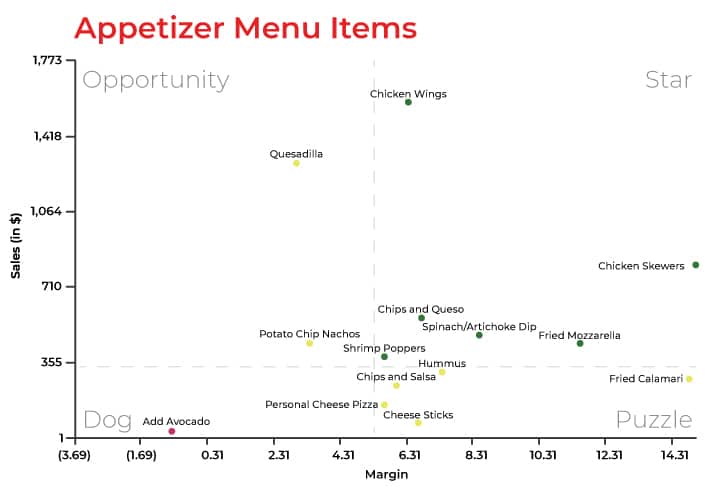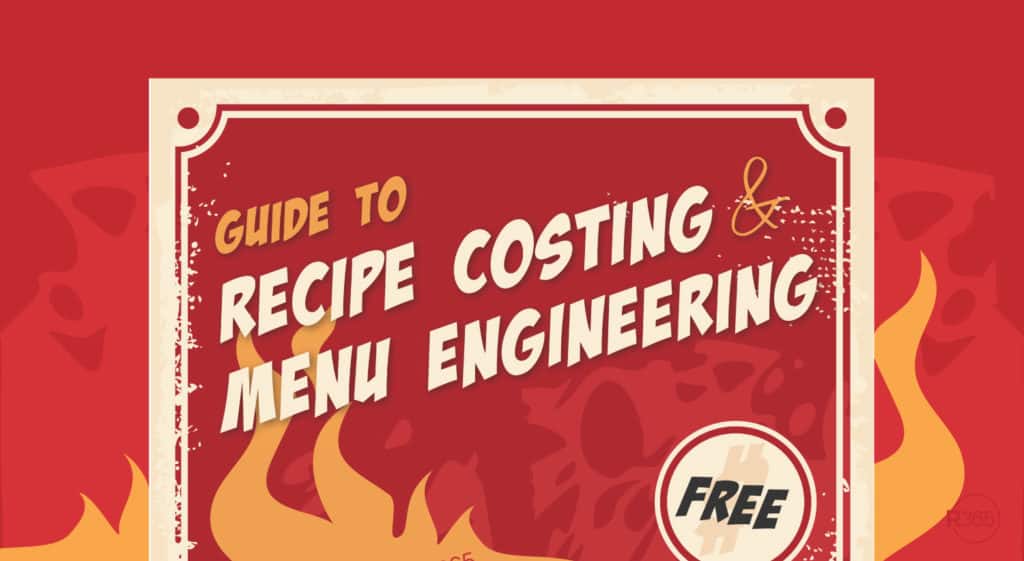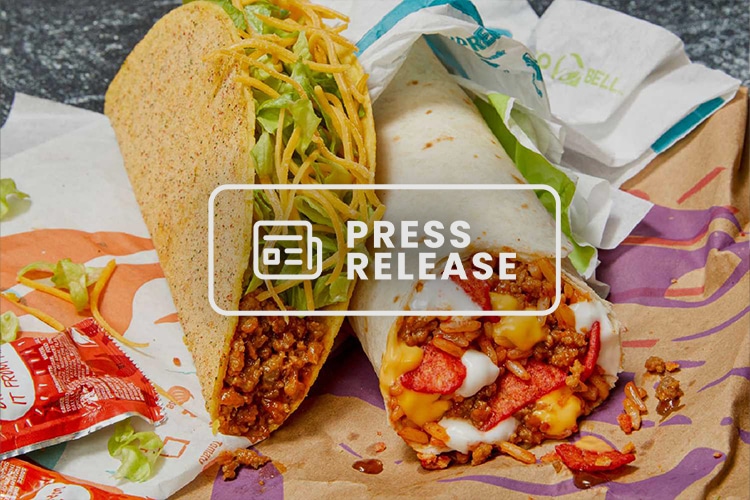By understanding which of your dishes are working hardest, you’ll know where to place your energy, what dishes to push, and what dishes you may need to remove from your menu altogether.
For more great tips check out other blogs in this menu engineering series:
What is Menu Engineering?
Menu engineering is a science that is based on human behavior. In short, it utilizes a mix of data analytics and art to increase profits per guest. The general process starts with reviewing food costs, leads to categorizing dishes, and then uses that data to influence menu design.
What are the advantages of menu engineering?
A profitable menu doesn’t happen by accident. Menu engineering is about maximizing profitability by promoting your most profitable menu items and encouraging customers to buy them. Your menu’s design has more power than you may realize. Small changes can increase your revenue by up to 35%.
What are the components of menu engineering?
Menu engineering focuses on two main elements: demand and margin contribution. It enables you to easily visualize popularity vs. profitability and gives you an accurate picture of each menu item’s margin contribution and sales success. Based on this data, you can seize menu opportunities, for example, promoting menu items that are high in margins, but low in sales.
Menu engineering also helps determine whether menu items are overpriced or underpriced, whether you need to revise recipe portions or ingredients, and monitors menu performance. It allows you to make informed decisions about popularity versus profitability.
Applying these metrics to dashboards provides insights into menu opportunities, helping you determine what items to add or remove from your menu, what price increases and decreases are necessary, and where items should be placed on your menus.
Menu costing
The first step in the menu engineering process is menu costing, which refers to breaking down every item on your menu to its individual ingredients and determining exactly how much it costs to create each menu item. You must cost your menu to the penny because the menu engineering process depends heavily on the profitability level of each menu item.
If you do this process manually, start by downloading a convenient menu engineering worksheet. For those who are more technologically advanced and don’t want to spend hours manually inputting data to find these values, there are many technologies available that can automate this process for you.
Be sure to include items such as spices and cooking oil. Then calculate the cost of each ingredient in a specific dish based on the cost of the individual food items used to prepare it. For example, if one egg costs $.17 and you use three eggs in your avocado and mushroom omelet, the egg cost for the omelet dish is $.51. Repeat that step with the mushroom, avocado, seasonings, cooking oil, etc. to calculate the total costs of ingredients. Add the cost of purchasing those items (only the food cost percentage related to the food items in the omelet dish) to the cost of ingredients to arrive at the food cost for the avocado and mushroom omelet. Do not include labor costs in your menu item calculation.
Beyond tracking usage, you must track yield from each food item to get an accurate cost on recipes. It’s especially important to track yield on food items used in multiple recipes. You need to know how much yield you got from each avocado, for example, and how much of that yield you used in your guacamole, your avocado and mushroom omelet, and your grilled chicken and avocado salad to determine the total cost of each of those three recipes. For example, if one avocado costs $.60 cents and each one yields five ounces, the avocado costs $.12 per ounce. If you use 2.5 ounces in your avocado and mushroom omelet, four ounces in your chicken and avocado salad, and 12 ounces in your guacamole, your costs for avocado per menu item are $.30, $.48 and $1.44, respectively.
While many restaurants do menu costing manually, manual menu costing is error prone because it’s difficult to maintain accuracy and consistency, especially if different people are involved in the process.
Ideally, you’re automating your menu costing. Either your POS system calculates food cost and profit for specific menu items within the system, or the data is pulled into your restaurant accounting software and inventory management system, which does the calculations for you. Your system should track usage and yield from each food item to get an accurate cost on recipes. Tracking your recipes’ food costs automatically also optimizes food item usage and reduces waste.
Update your recipe costing (the ingredient cost portion) every time there are price changes in food items from suppliers. If you’re using a restaurant-specific accounting and operations system that incorporates inventory management and menu engineering as part of the platform, the system automatically updates your recipe costing as food item costs change.
How to perform a menu analysis

Once you’ve determined an item’s cost and price, evaluate a menu item’s profitability based on the contribution margin. The contribution margin is the menu price minus the cost. (Your restaurant management software automatically calculates the contribution margin.) Menu engineering then focuses on maximizing the average contribution margin of each guest’s order.
Now that you know how to calculate all the food costs necessary to complete your analysis, you should be able to start to categorize your dishes. Software can do this for you automatically, but if you are tracking with Excel manually, this is how that process would work.
Menu engineering matrix
Menu engineering was originally brought to the attention of restaurants in the early 1980s by Professor “Coach” Donald Smith of Michigan State University. Smith created the matrix that categorizes the profitability of dishes and includes Stars: dishes with high margins and high sales; Opportunities: dishes with high sales but less than ideal margins; Puzzles: dishes with high margins but low sales; and the dreaded Dogs: dishes with low sales and low margins that you should seriously consider removing from your menu.
Menu engineering stars, opportunities, puzzles, and dogs
Stars: popular and profitable
You’ll want to not only keep these popular and profitable items but feature them prominently on your menu. Maintain the exact specifications of the item and do not change the quality of the product to increase its profitability because you might also decrease its popularity. However, you can test increasing profitability by raising the price slightly. Also have servers suggest these star items. Train them on suggestive selling to increase customer demand for these popular and profitable menu items.
Opportunities: popular, but unprofitable
If a menu item is popular but not profitable, you want to increase the contribution margin without reducing its popularity. This requires careful and gradual price increases. If the item is popular because of its high value, it may still be perceived by customers as a good value after a slight price increase. Also consider reducing the cost of the accompaniments or decreasing the portion size to increase the contribution margin.
Puzzle: profitable, but unpopular
Items that are profitable, but not popular with customers are often a puzzle. Because of the high margin contribution, you want to sell these items, but your challenge is encouraging customers to buy them. You can create demand for these items by repositioning them on the menu or training servers to suggestively sell them. You might also consider decreasing the price slightly to increase the popularity of these menu items, while maintaining their profitability.
Dog: unpopular and unprofitable
Menu items that are not popular or profitable are obvious candidates for the chopping block. Exceptions might be items that provide opportunities to use leftovers and also have low labor costs associated with their preparation. Then you’ll most likely want to keep these items on the menu. Otherwise, 86 these dogs.
Measuring popularity is easiest if you plot your menu items on a menu engineering matrix as seen to the right. (The Y axis shows the item’s popularity, and the X axis shows the item’s profitability.) If you have advanced restaurant management software, the matrix is created automatically as part of the menu engineering process. Whether you create the matrix manually or your system does it for you, it will help you visualize profitability vs. popularity of your menu items, by placing them into four categories.
Menu engineering example
Did you know diners spend an average of only 109 seconds looking at your menu? Once you know what your top performing dishes are, it is vital to make sure that are placed where they will be immediately noticed.
For example, when you’re looking at a standard two- or three-fold menu, your eyes typically start in the middle of a page, then move to the top right, then top left in what is referred to as the “eye gaze path.” If you look at this path, you’ll see that the majority of time is spent looking at the top portion of your menu, in a triangular formation.
This is also sometimes called the “golden triangle,” because it encompasses some pretty high-value real estate when it comes to menu item placement. Consequently, consider placing high-margin dishes at the center and upper-right corner of your menu. When arranged correctly, a great menu works as a silent salesperson, doing most of the heavy lifting for you.
Conclusion
As a restaurant owner/operator you need to make calculated decisions about whether to keep or remove dishes; whether to raise or lower a menu item’s price, change portion sizes or ingredients; and how to identify profitable items to increase sales of those dishes.
With menu engineering, you immediately identify “dead weight” on your menu and learn how the profit contribution of each menu item affects your bottom line. You also discover how to eliminate across-the-board price increases while learning how to strategically increase prices with little or no customer resistance.
Menu engineering will not only help you understand the profit contribution for each of your menu items, it also provides you with an invaluable tool for analyzing your restaurant’s product mix and how it affects your profitability.
If you’d like to learn more about how to automate the menu engineering process, visit the Restaurant365 website. Restaurant365 incorporates restaurant accounting software and restaurant operations software into an all-in-one, cloud-based platform that includes menu engineering and inventory management as part of the solution.




